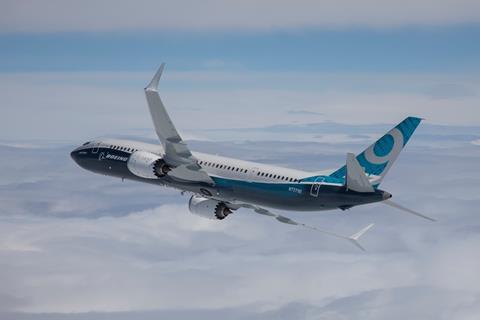The Federal Aviation Administration has issued an emergency airworthiness directive (AD) requiring the immediate inspections of Boeing 737 Max 9s equipped with emergency exit door “plugs”.
The agency’s order requires airlines to immediately ground 737 Max 9s that have yet to be inspected, though how many aircraft must be pulled from service remains unclear.
The move responds to the 5 January in-flight blow out of a cabin door plug in an Alaska Airlines 737 Max 9. That failure caused a rapid depressurisation, leaving a hole in the side of the jet. The pilots landed the jet safely and no passengers nor crew members were seriously injured, according to US officials.

“This emergency AD was prompted by a report of an in-flight departure of a mid-cabin door plug, which resulted in a rapid decompression of the airplane,” says the FAA’s 6 January order. “The FAA is issuing this AD to address the potential in-flight loss of a mid-cabin door plug, which could result in injury to passengers and crew, the door impacting the airplane, and/or loss of control of the airplane.”
The order applies to 171 aircraft globally – all 737 Max 9s “with a mid-cabin door plug installed,” the agency says. “Further flight is prohibited until the airplane is inspected and all applicable corrective actions have been performed.”
The entire global fleet of 737 Max 9s stands at 215 aircraft, according to Cirium fleets data. Not all the jets have door plugs.
Alaska Airlines has already grounded its 65 737 Max 9s in response to the incident. United Airlines has also already grounded jets, saying only 33 of its 79 737 Max 9s have been through the required inspections.
Boeing says, “We agree with and fully support the FAA’s decision to require immediate inspections of 737-9 airplanes with the same configuration as the affected airplane”.
”A Boeing technical team is supporting the NTSB’s investigation into last night’s event. We will remain in close contact with our regulator and customers,” the company adds.





























